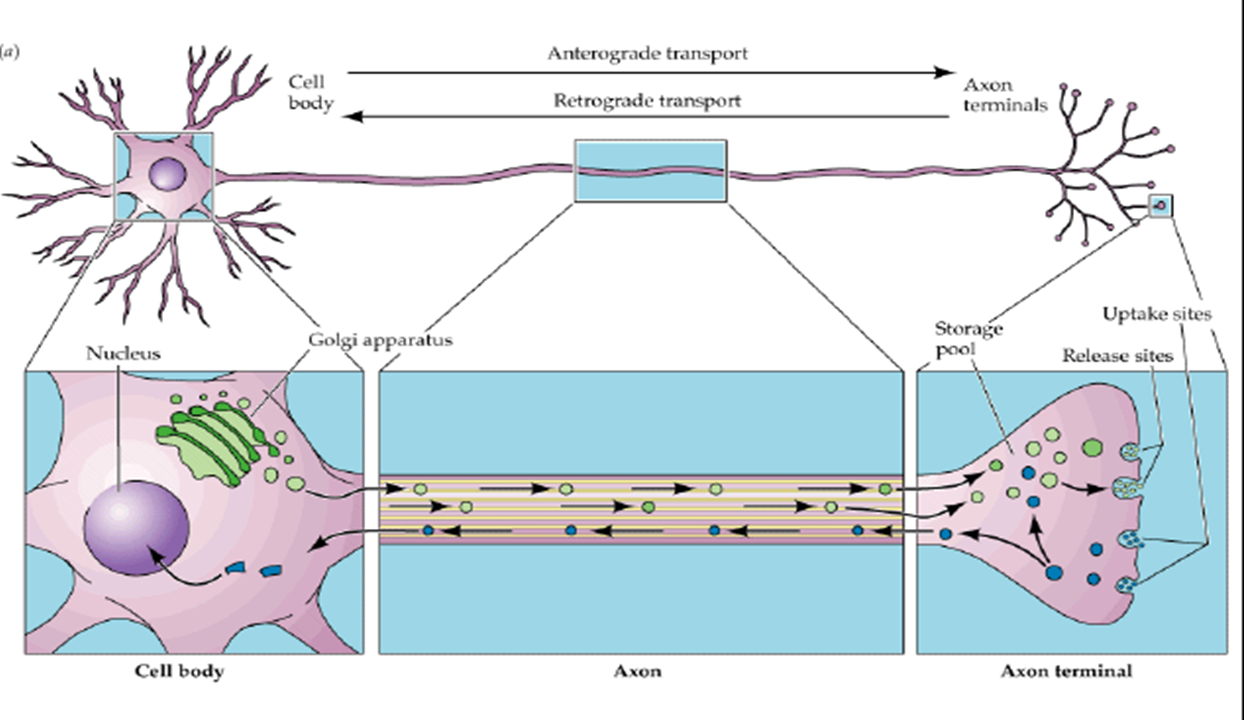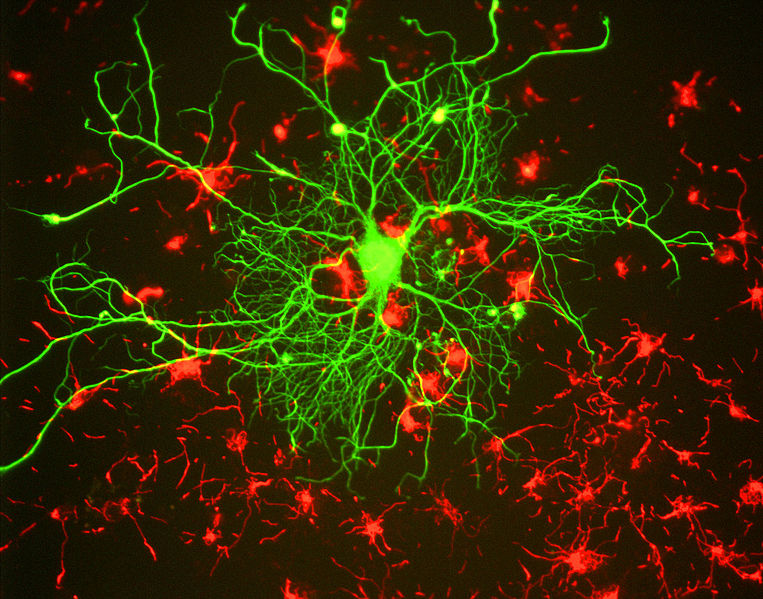|
Axoplasmic Transport is the transport of chemicals, vesicles and cell organelles along the interior of the axon
The cytoplasm of axons contains neurotubules which are the transport system along which packages containing essential materials are transported through the axoplasm. RNA is contained in the Nissl substance of neuronal cell bodies, and proteins and peptides are synthesised there. In addition to the enzymes, neurotransmitters and structural proteins, there is a rate of turnover of cell organelles, all of which need to be replaced regularly, and anterograde axonal transport is essential for the delivery of these to the axon terminals. The proteins kinesin and dynein are involved in the transport process along neurotubules, and the speed of transport is sometimes divided into two types: fast and slow. 'Fast axonal transport' is extremely slow compared with the speed of the action potential - around 100 mm/day. Vesicles are transported by the fast mechanism. 'Slow axonal transport' is much slower - around 1 mm/day and neurofilaments appear to use this slow mechanism.. |
In orthograde (anterograde) axonal transport packages of materials are transported within the axon from the cell body to the axon terminals. These packages contain a mix of components required for each function, within a vesicle. Reterograde axonal transport is the process whereby substances are carried from the terminal boutons to the cell body. Some vesicular material is recycled and retruned to the cell soma. The contents of the retrogradely transported vesicles include chemical messages released by the post-synaptic cell. |
The Cytoskeleton The cytoplasm of neurones also contains neurofilaments and neurotubules. Neurofilaments are synthesised in the cell body during the course of regeneration. They are needed to extend the axon and increase the diameter of the regenerated axon terminals. Neurofilaments are a major component of the neuronal cytoskeleton, and provide structural support for the dendrites and the axon and regulate axon diameter. Glia do not contain neurofilaments.
|
Rat brain cells grown in tissue culture and stained, in green, with an antibody to neurofilament subunit NF-L, which reveals a large neuron. |

